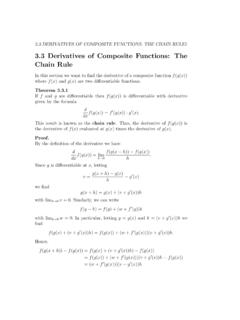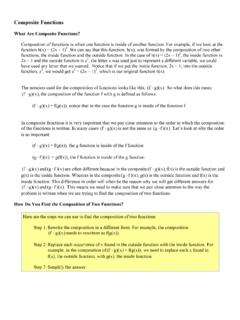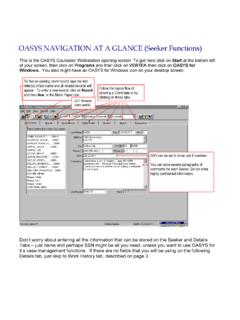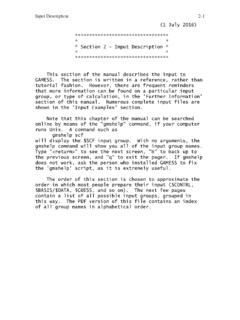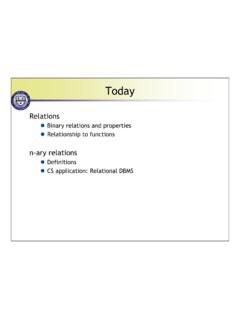Transcription of RR950 - Preliminary fire testing of composite …
1 Health and Safety Executive Preliminary fire testing of composite offshore pedestrian gratings Prepared by the Health and Safety Laboratory for the Health and Safety Executive RR950 Research Report Health and Safety Executive Preliminary fire testing of composite offshore pedestrian gratings Burrell G, Jagger S, Johnson D Harpur Hill Buxton Derbyshire SK17 9JN Fibre Reinforced Plastic (FRP) gratings can offer a number of attractive advantages over traditional steel gratings such as enhanced environmental resistance, reduced through life costs and the promise of significant mass savings.
2 However, this Preliminary study has demonstrated that the current fire certification of FRP gratings by a standardised (ASTM E119 cellulosic fire ) time-temperature curve is not representative of the temperature profile of a hydrocarbon pool fire . Experimental data suggests that FRP gratings exposed to a hydrocarbon pool fire can pass the fire integrity certification standard to L2 but be structurally impaired such that they are not fit for pedestrian use. This report and the work it describes were funded by the Health and Safety Executive (HSE). Its contents, including any opinions and/or conclusions expressed, are those of the author alone and do not necessarily reflect HSE policy.
3 HSE Books Crown copyright 2012 First published 2012 You may reuse this information (not including logos) free of charge in any format or medium, under the terms of the Open Government Licence. To view the licence visit , write to the Information Policy Team, The National Archives, Kew, London TW9 4DU, or email Some images and illustrations may not be owned by the Crown so cannot be reproduced without permission of the copyright owner. Enquiries should be sent to ii KEY MESSAGES Fibre Reinforced Plastic (FRP) gratings can offer a number of attractive advantages over traditional steel gratings such as enhanced environmental resistance, reduced through life costs and the promise of significant mass savings.
4 However, this Preliminary study has demonstrated that the current fire certification of FRP gratings by a standardised (ASTM E119 cellulosic fire ) time-temperature curve is not representative of the temperature profile of a hydrocarbon pool fire . Experimental data suggests that FRP gratings exposed to a hydrocarbon pool fire can pass the fire integrity certification standard to L2 but be structurally impaired such that they are not fit for pedestrian use. 1 EXECUTIVE SUMMARY Fibre reinforced plastic (FRP) is increasingly considered for a range of applications in the offshore oil and gas sector.
5 In comparison to traditional engineering materials such as steel, FRP can offer a number of attractive benefits such as enhanced environmental resistance, reduced through life costs and the promise of significant mass savings. These perceived benefits are exemplified by FRP gratings which are increasingly commonplace on installations within the UK Continental Shelf (UKCS). Performance requirements for FRP gratings in a marine environment are detailed within a Coast Guard memorandum entitled, Policy File Memorandum on the use of fiber reinforced plastic (FRP) gratings and cable trays (PFM 2-98).
6 FRP gratings must satisfy structural fire integrity, fire retardance, flame spread and smoke generation requirements. A fundamental element of the qualification procedure is that the gratings must be exposed to a standardised time-temperature curve for a cellulosic fire (ASTM E-119) for a period of 60 minutes. However, in offshore oil and gas operations the likely source of fire will be in the form of a hydrocarbon pool which is recognised to be more severe than a cellulosic fire . Accordingly, the Health and Safety Executive (HSE) requested that the Health and Safety Laboratory (HSL) perform a series of Preliminary experiments to gauge the performance of a range of FRP gratings under such conditions.
7 The principle findings of the study were: 1. As part of its qualification requirements for structural fire integrity gratings, the US Coast Guard specifies that sample gratings are tested in a furnace and exposed to a standardised time-temperature curve for a cellulosic fire (ASTM E-119). The exposure time is 60 minutes rising to a final temperature of 927 C. The temperature data obtained as part of this study demonstrate that this time-temperature profile is not representative of a hydrocarbon pool fire scenario, which can reach this temperature in 5 minutes.
8 Therefore the results may be misinterpreted to give a false sense of confidence that the gratings can support loads for longer than they can in an actual hydrocarbon pool fire . 2. When exposed to a hydrocarbon pool fire , loaded and unloaded isopthalic polyester gratings fail after minutes and minutes respectively. 3. When exposed to a hydrocarbon pool fire , loaded glass reinforced phenolic gratings (qualified as structural fire integrity level 2) deform, thereby shedding their load within 6 minutes. 4. When exposed to a hydrocarbon pool fire of approximately 15-17 minutes duration, the structural integrity of loaded and unloaded reinforced phenolic gratings (qualified as structural fire integrity L2) appears to be compromised.
9 Despite this, all of the surviving gratings met the post-loaded test criteria for qualification as L2 according to PFM 2-98. 5. When exposed to a hydrocarbon pool fire of approximately 15-17 minutes duration, glass reinforced phenolic gratings (qualified as structural fire integrity L2) failed when subjected to the dynamic loads applied as a consequence of a 90 kg male running over them despite passing the post-loaded test criteria for qualification as L2 according to PFM 2-98. 2 6. Further work is necessary to understand fully the behaviour of composite gratings in a fire and develop a rigorous and robust test procedure for ensuring they are fit for installation offshore .
10 3 CONTENTS PAGE 1. INTRODUCTION .. 5 BACKGROUND 5 AIMS 6 2. METHODOLOGY .. 7 GRATINGS 7 fire testing 8 POST fire EVALUATION 10 3. 12 fire testing 12 POST fire EVALUATION 15 4. DISCUSSION .. 19 5. CONCLUSIONS .. 20 6. REFERENCES .. 21 APPENDIX 22 APPENDIX 23 APPENDIX 27 APPENDIX 49 4 1. INTRODUCTION BACKGROUND Fibre reinforced plastic (FRP) is increasingly considered for a range of applications in the offshore oil and gas sector. In comparison to traditional engineering materials such as steel, FRP can offer a number of attractive benefits such as enhanced environmental resistance, reduced through life costs and the promise of significant mass savings.










